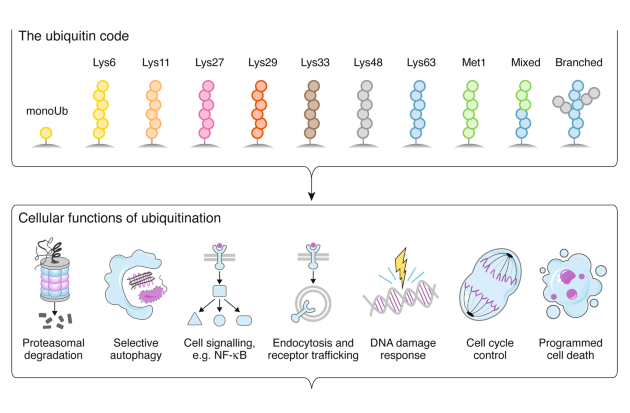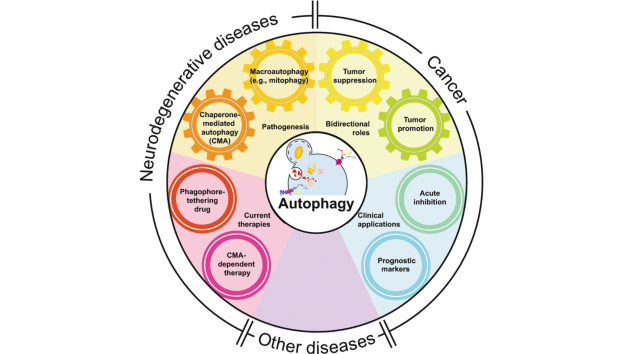Special |
Collections
Filters
-
Collection Type
-
-
Special |
 Ubiquitin Signaling in Health and Disease
Ubiquitin Signaling in Health and Disease
This Special Issue of Cell Death & Differentiation is dedicated to ubiquitination, one of the most complex and pervasive post-translational protein modifications that affects thousands of targets and all aspects of eukaryotic biology. In this set of commissioned articles, the authors discuss new players of the complex ubiquitin system, the role of new 'ciphers' of the ubiquitin code, and emerging concepts of ubiquitin-mediated processes in cell physiology and disease development. Read through to learn how targeting components of the ubiquitin machinery could translate into new therapeutic opportunities.
Image: Rune Damgaard, Cell Death & Differentiation (2021). DOI: 10.1038/s41418-020-00703-w -
Special |
Human Organoids: Filling the Gap Between Basic and Translational Research
This Special Issue of Cell Death & Differentiation brings together a set of reviews focused on human organoids. Pioneers of the field discuss strategies to develop 3D cultures that faithfully recapitulate key features of human organs such as brain, inner ear, female reproductive or gastrointestinal tract, which can be used to study not only tissue physiology but also the pathogenic mechanisms of multiple diseases, ranging from infections to cancer. The authors discuss current challenges as well as strategies to harness the tremendous potential of organoids to fill the gap between basic and translational research.
Image: Alzamil et al, Cell Death & Differentiation, 2020 https://www.nature.com/articles/s41418-020-0565-5 -
Special |
 Special Issue: Autophagy in Physiology and Disease
Special Issue: Autophagy in Physiology and Disease
This Cell Death & Differentiation special issue on Autophagy brings together a series of commissioned reviews dedicated to the rapidly expanding autophagy field. Outstanding experts discuss how autophagy emerged as a key process in most organismal developmental stages, from fertilization throughout adult life and regeneration; how the removal of cellular organelles and infectious agents needs to be carefully controlled, impacting on the immune response and on an expanding list of diseases; what are the best strategies to modulate autophagy for the treatment of cancer and other pathologies? The readers will be challenged by this and other thought-provoking questions which we hope will help them charting innovative paths toward our thorough understanding of this fundamental process and its therapeutic applications.
Image: https://doi.org/10.1038/s41418-019-0480-9 -
Special |
 Special issue on Necroinflammation
Special issue on Necroinflammation
This Special Issue of Cell Death & Differentiation focuses on necroinflammation, the inflammatory response to necrotic cell death. Leading experts in the field discuss the remarkable advances made in both basic and translational research, dissecting the highly interconnected pathways underlying various programmed necrosis forms, understanding how these pathways differently engage the immune system, how they impact on health and disease, and how they can be monitored and targeted in the clinical practice.
-
Special |
Autophagy
-
Special |
Retroviruses and Apoptosis
-
Special |
A Translational Approach 2
-
Special |
A Translational Approach 1
In this supplement the authors focus on four areas in which developments have been made – atherosclerosis, erythropoietin, bone remodelling and resistance to cancer therapy – and cover the subjects with a range of content types, from editorials to interviews and reviews to research.

 p53: Recent Facts and New Questions
p53: Recent Facts and New Questions